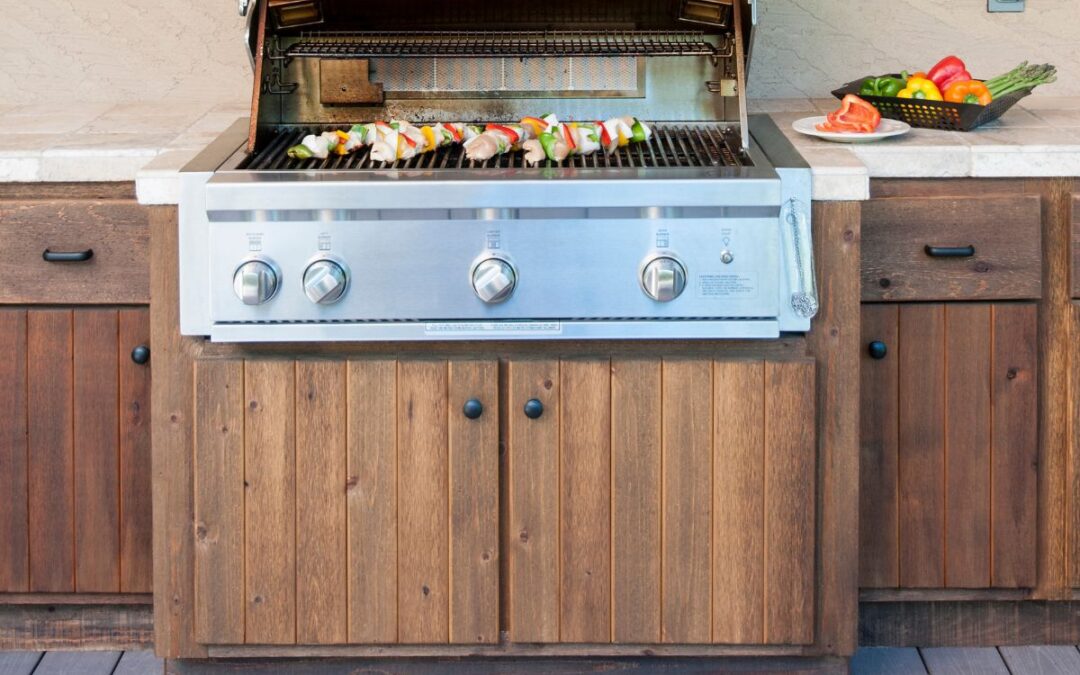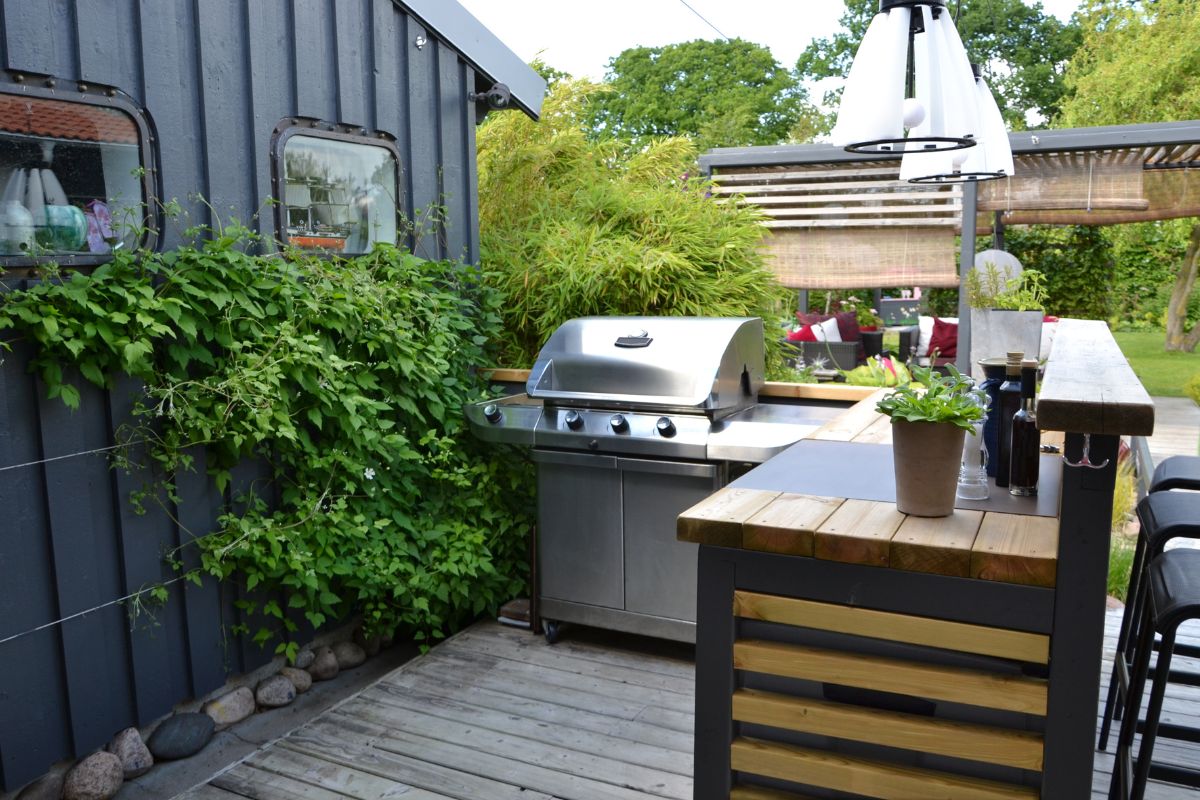If your next big project is an outdoor kitchen you may be weighing up your options regarding which frame materials to use. We’re going to look at framing an outdoor kitchen with wood and things to consider before making a choice.
What Is An Outdoor Kitchen Frame?
An outdoor kitchen frame is exactly what it sounds like, it is a frame that is built to support an outdoor kitchen.
The framework holds the appliances, countertop, cabinets and accessories. It also supports the stone veneer, cladding, or stucco finish.
A kitchen frame is like the skeleton of your kitchen before you ‘flesh’ it out with cement board and the finish of your choice.
What To Consider For A Wooden Outdoor Kitchen Frame
Years ago all outdoor kitchens were framed in wood because it was the cheapest and most efficient way to build the framework. Today there are other options such as metal frames and concrete block work.
There are reasons why people moved away from using wood as a framing material for outdoor kitchens, but we’ll get on to that later.
For now let’s look at some of the things you need to consider for an outdoor kitchen wooden frame.
Location
Where your home is located should be a major consideration as the climate plays a big part in the longevity of your outdoor kitchen.
Think about how wet it gets in the fall and winter and how hot the summers are. All of the expanding and contracting of the wood may be an issue.
Coastal regions may mean corroding for aspects of your outdoor kitchen including the frame and hot regions may make timber dry out and shrink.
Budget
One of the driving forces behind your project, apart from your partner, may be your budget.
If you are hoping to keep costs down then wood is an obvious choice as it is cheaper than the alternatives of metal and possibly even of concrete masonry units.
You may be trying to minimize what you spend on the framework as you have your heart set on that state-of-the-art barbecue grill.
But if you use wood for a frame you’re going to have to provide fire resistance and an insulated grill jacket, and they’re not cheap!
Size
We realize it can be a tricky subject but size matters. You need to work out how much space your outdoor kitchen is going to take up and whether it’s just too big a job for you to handle alone.
Small wooden frames are a simple DIY job but the bigger it gets, the more complicated it’s going to get. If the project gets too large you may have to hire a professional contractor.
Function
Kitchens, both indoor and outdoor, are divided into four zones: wet, dry, cold and hot. Wet is where your sink will be, dry is your preparation area, cold is your refrigerator and hot is where the food is cooked.
While dry and cold won’t pose many issues for a wood frame outdoor kitchen, consider how it will handle both heat and water. The frame will need to be properly protected from both.
Design
The design of your outdoor kitchen will determine how complicated the wooden framework will need to be.
Remember you’re going to have to work out where all the appliances are going to go, how to get power to every one of them, install lighting, storage and seating.
That amounts to a lot of wood and a heck of a lot of planning as the framework needs to be able to support the appliances safely.
Power
Running wires and pipework to a wooden framed outdoor kitchen is potentially easier than to a metal or concrete framework.
To get the wires and pipes to where you need them you can simply drill holes in the pressure treated wooden frame and pass them through.
You should use a qualified professional to do any wiring and installation of natural gas to your appliances.
Appliances
The wooden framework of your outdoor kitchen will need to be shielded from the hot appliances that you install. Any grill, pizza oven, smoker or oven is a potential source of fire particularly in a structure made from wood.
You will need to provide the proper fire resistance to the entire kitchen and especially around your cooking appliances. An insulated grill jacket is a must and will need to be included in your budget as they can run to hundreds of dollars.
Lighting
You’ll want to enjoy your outdoor kitchen all summer even when it’s dusk, so it’s a good idea to install some lighting.
Again, making provision for the wiring for your lights should be relatively straightforward with a wooden frame as you can drill conduit holes for the wires.
Some lights can become quite hot, so you may need to provide some protection between the wooden frame and the light fitting for safety.
Storage
Potentially one of the easiest parts of building a wooden frame outdoor kitchen is making the storage areas.
You may not need as much storage as you have in your indoor kitchen, but it’s good to have somewhere to keep all the utensils and cooking equipment outdoors.
As wooden structures often attract bugs you may want to keep your utensils, tableware and pots in plastic containers inside the cabinets.
Seating
If you’re cooking outside, chances are you will be eating outside, so you’ll need some seating. This is something you can incorporate into a wooden frame by constructing a bar and supplying some high stools.
Alternatively you could build your own table and benches as by now you’re likely to be quite the artisan with timber.
Extras
Think about what extras you would like to add to your outdoor kitchen such as a pergola or a separate beer fridge. Make sure you include these in the design and planning stage, so they can be incorporated into the frame.
Benefits Of Using A Wood Frame
One of the main benefits of having a wood frame outdoor kitchen is the price. It will be much cheaper than a metal frame and if you are a DIYer you can save on labor by doing most of the work yourself.
Wood is easy to work with, and the framework is not that complicated. Metal frames are not really a job for beginners.
Downsides Of Having A Wood Frame
There are a number of disadvantages to having a wood frame outdoor kitchen. In the first instance, it is a combustible material, and it’s in an area used for cooking. It doesn’t take a lot to see the downside.
So you’ll need to spend money making sure it’s fire-resistant and that will add to the costs you thought you were saving by using wood in the first place.
Wood also doesn’t like moisture, which is a given considering it’s outdoors. Rot and warping are going to be issues.
Finally, insects such as termites can invite themselves to dinner in your kitchen, with your kitchen framework as the main course.
Final Thoughts
We hope this guide to framing an outdoor kitchen with wood has given you some helpful tips and information.


